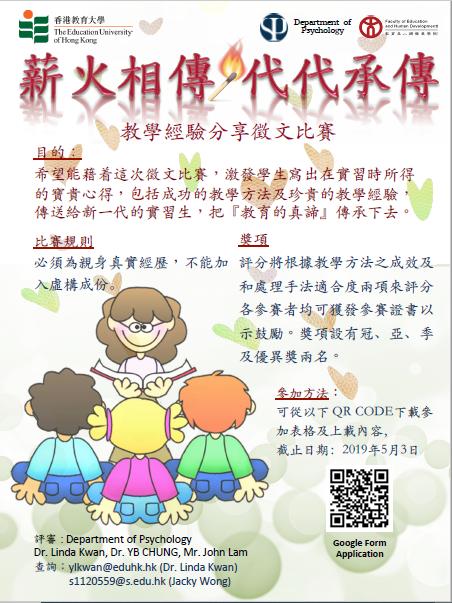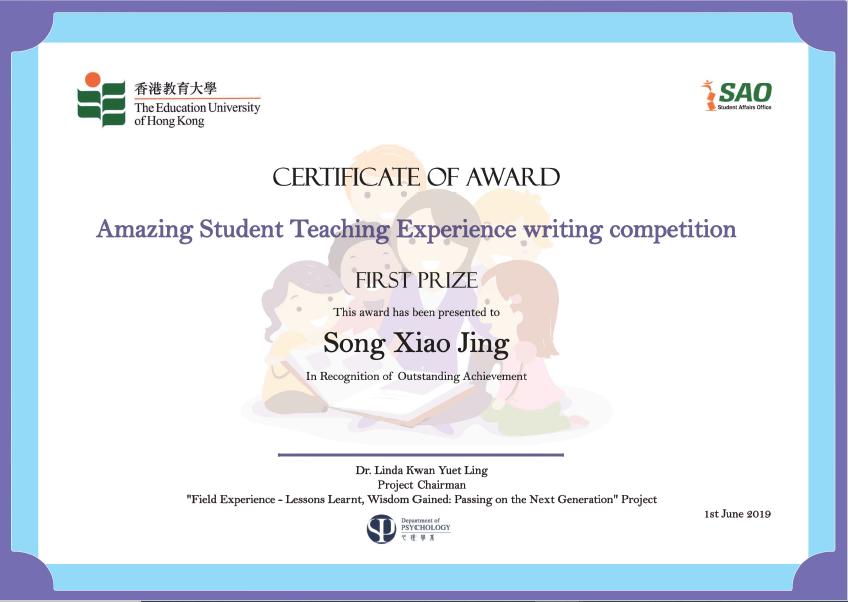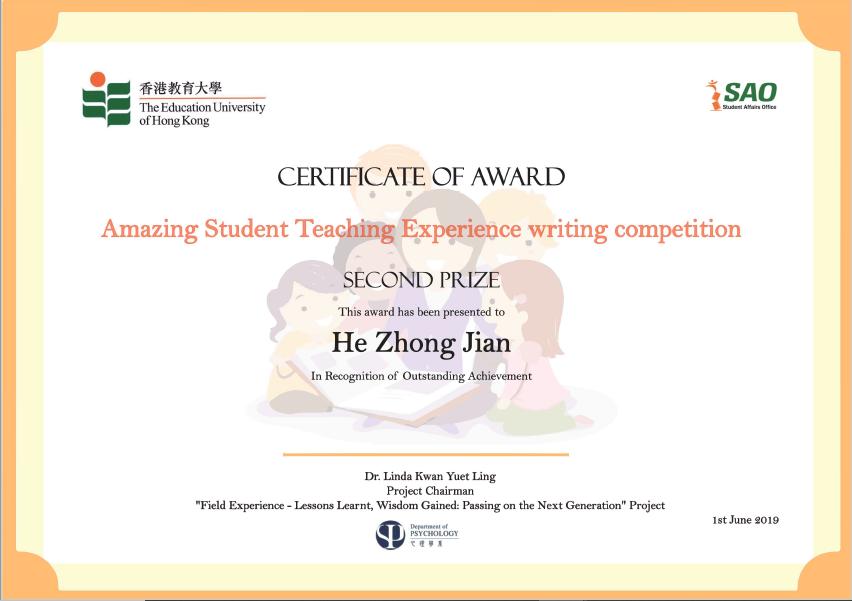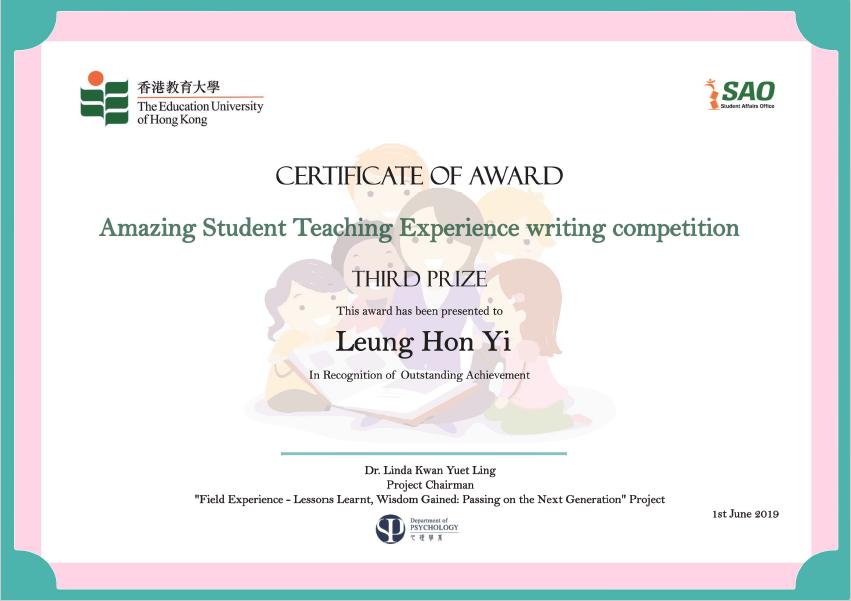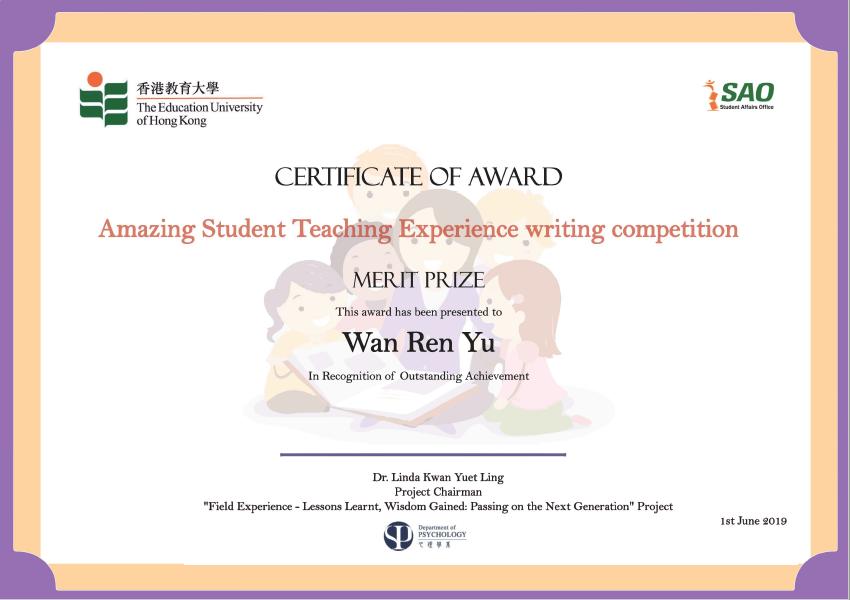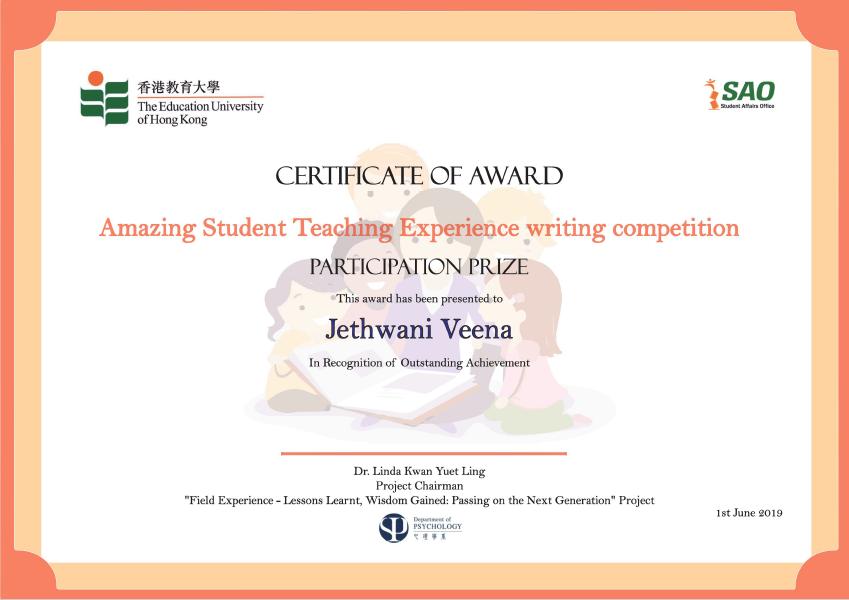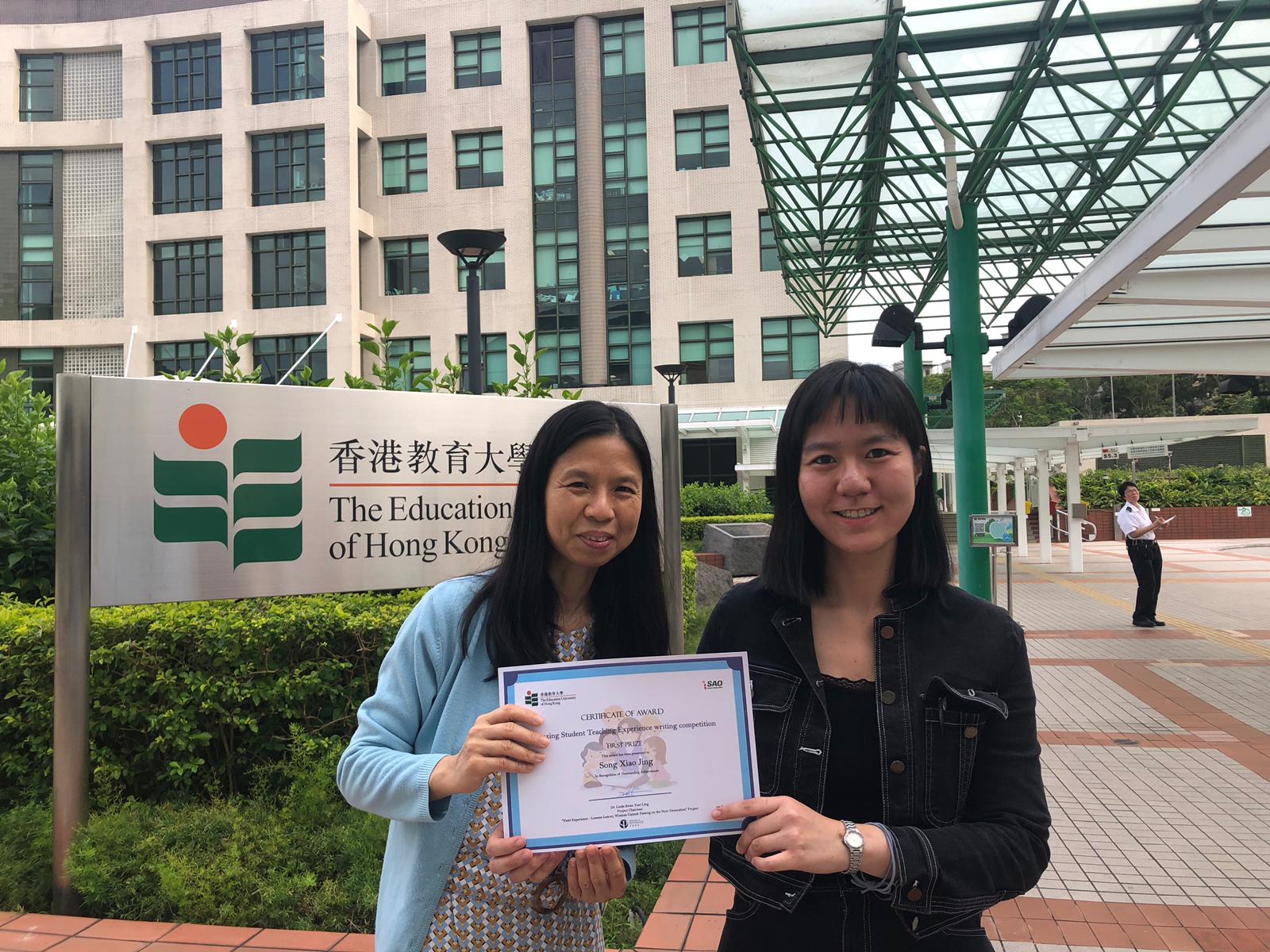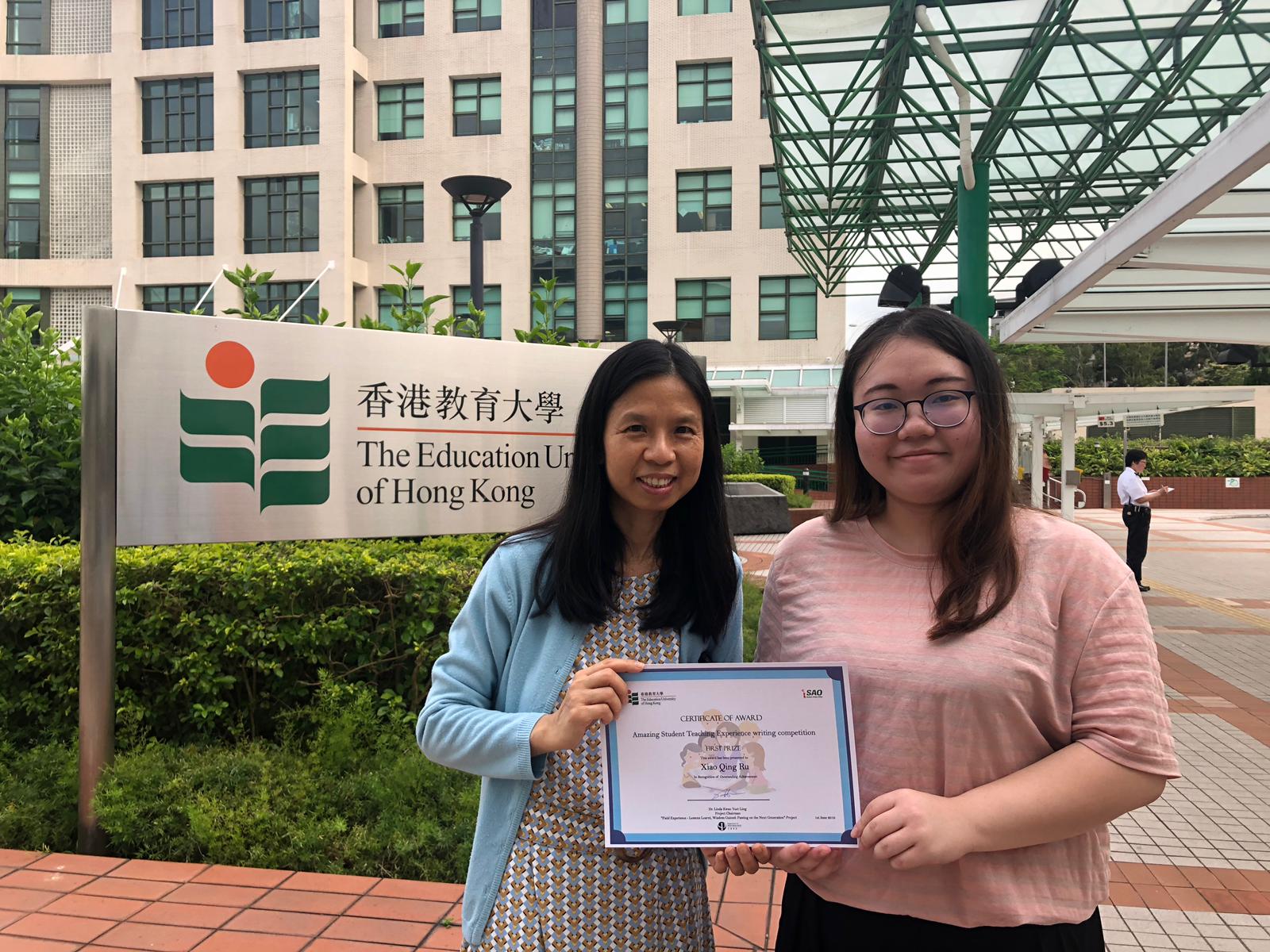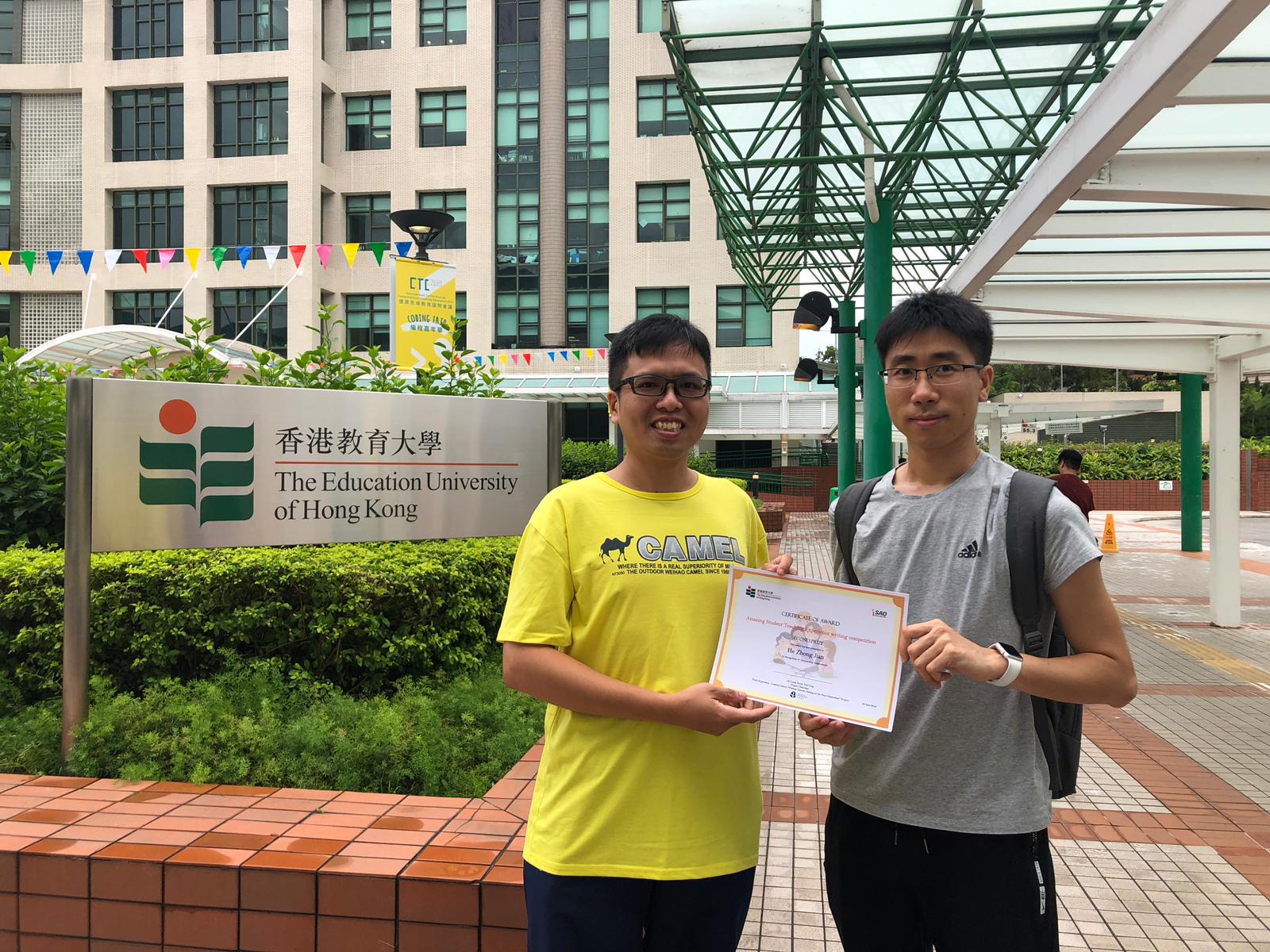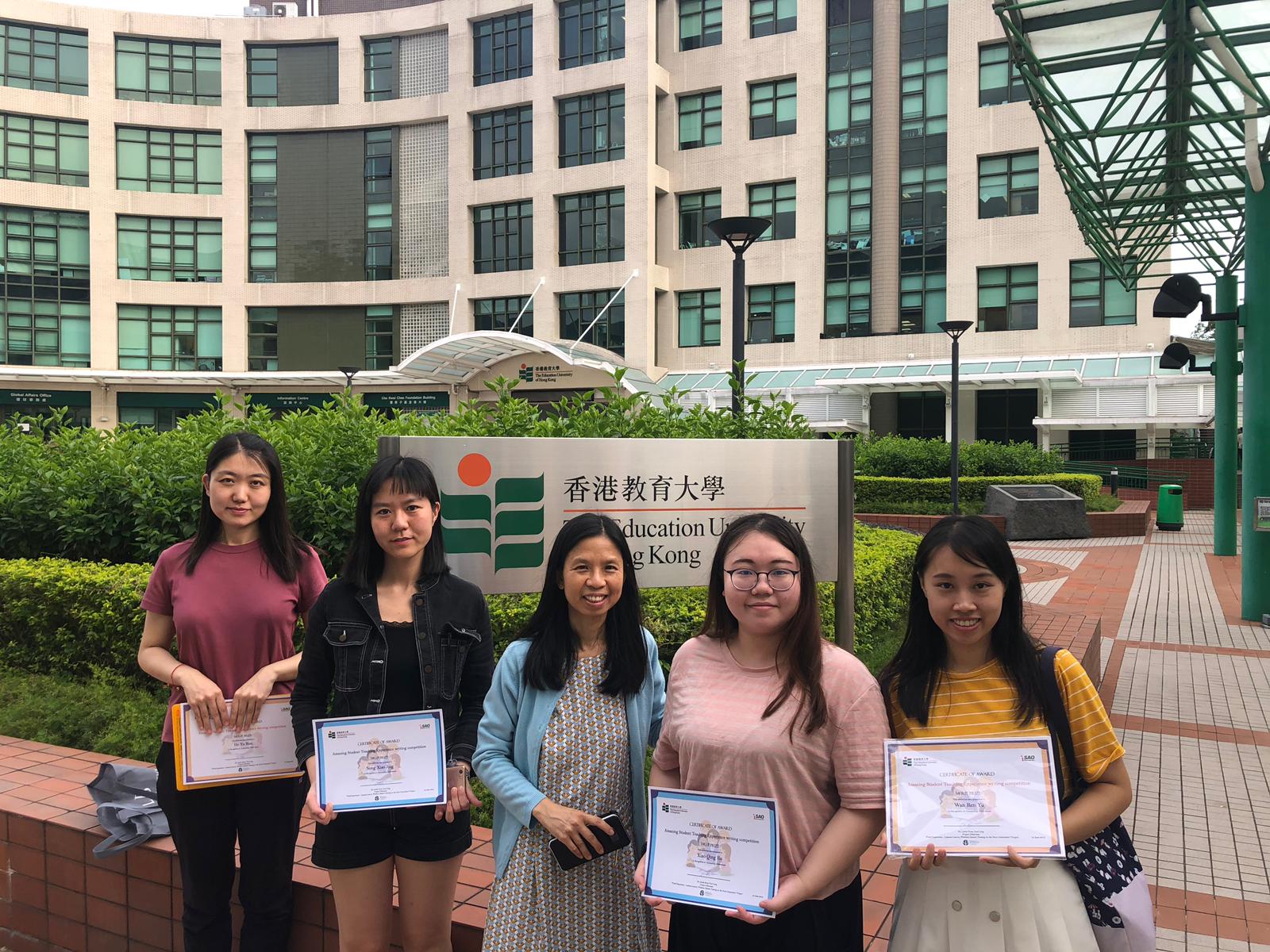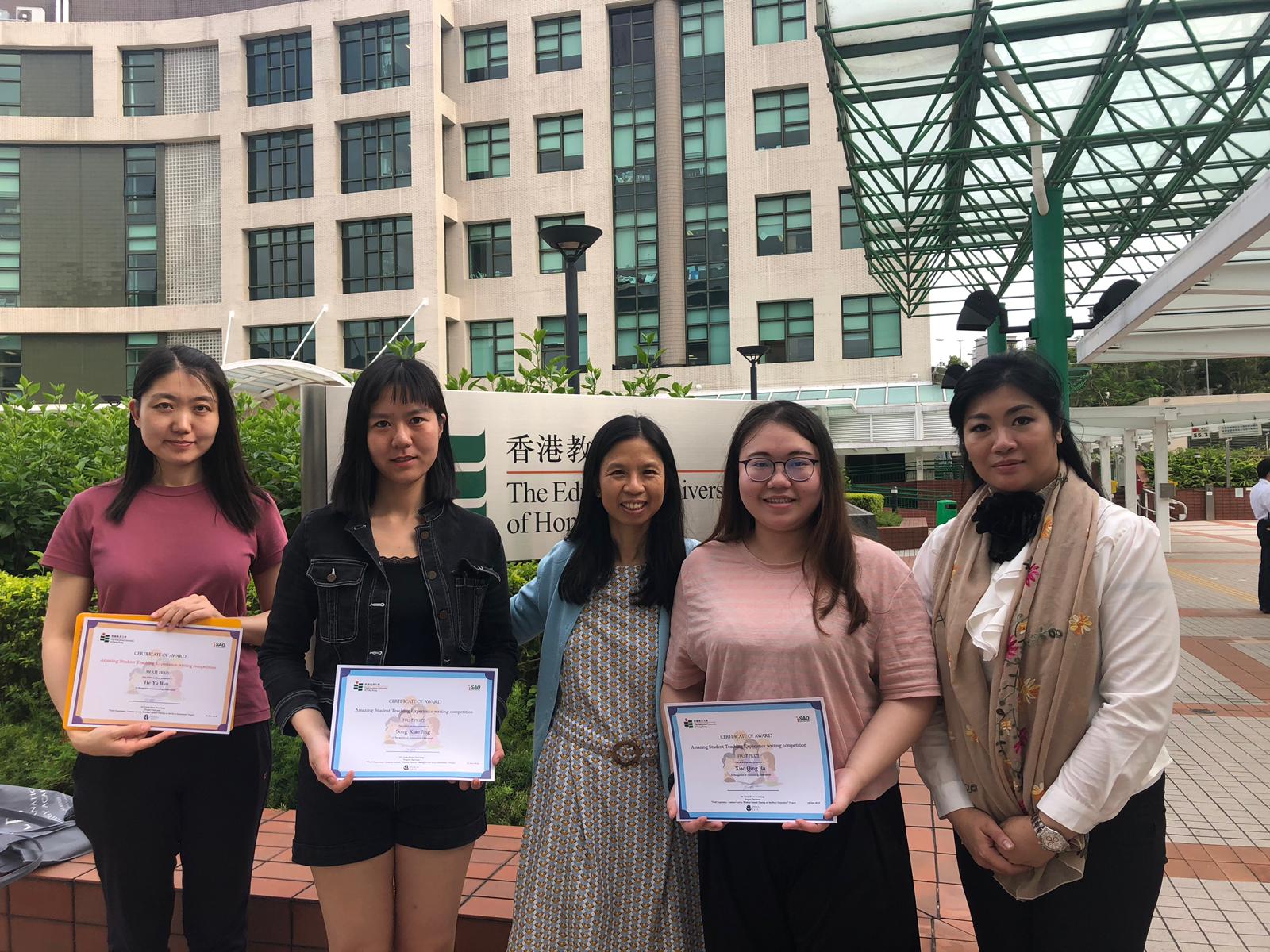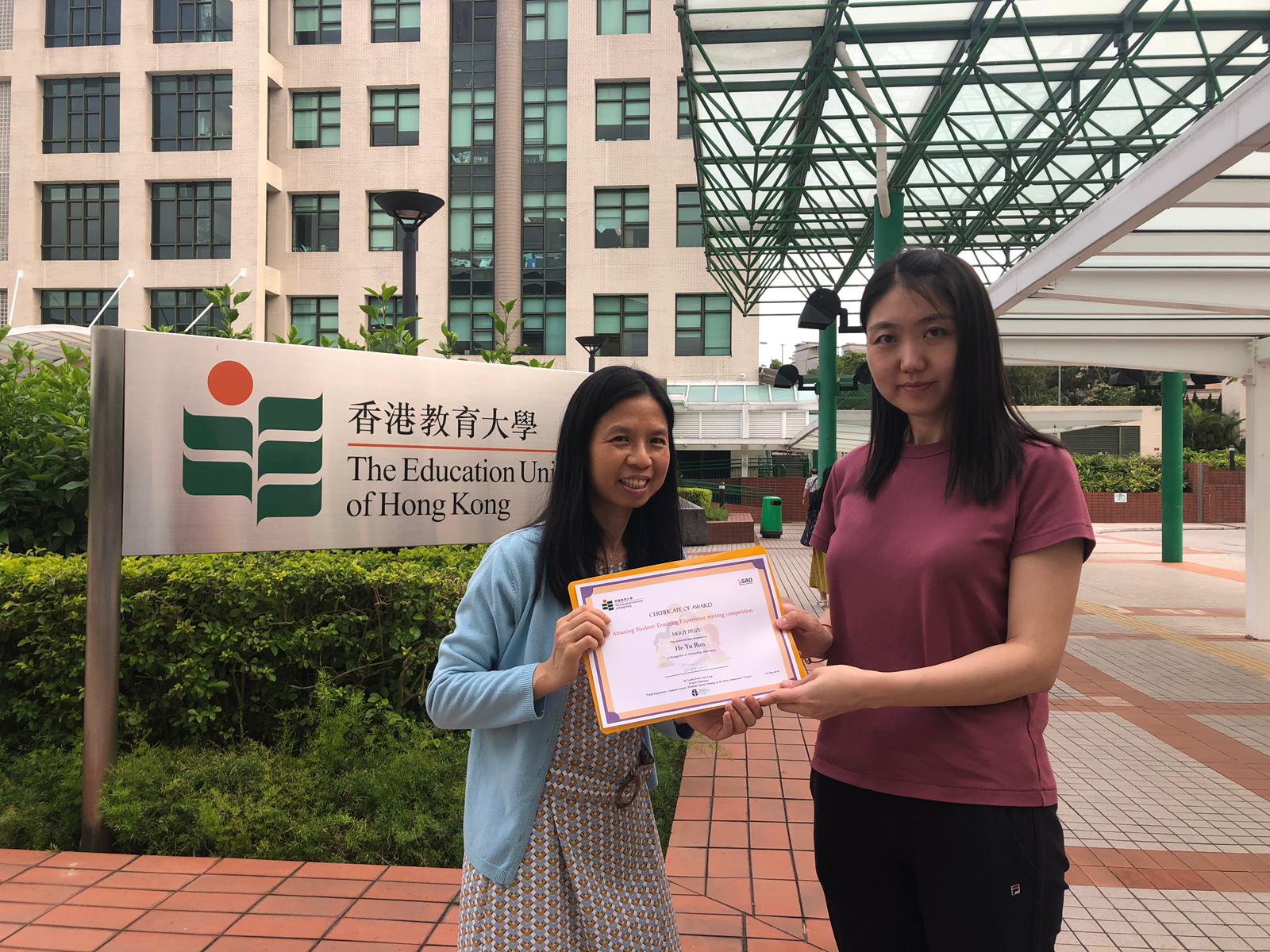宋晓静(11310424)
Applying Psychology in Children’s English Learning
It has long baffled me how to motivate students to learn English and how to reinforce the learning outcome and achieve longer memory retention. My paper today discusses how I applied the spaced repetition method and the task-based learning method to improve students’ performance in English language learning.
In 2018, I participated in the Dalian Charities Federation Volunteer Program, where I taught primary school students English. With a long-lasting interest in teaching and education, I spent time studying teaching pedagogy from the psychological perspective.
Unfortunately, some of my earlier attempts failed. I attempted to customize the teaching materials to students’ English levels, but it didn’t work well. Therefore, I resorted to academic literature and found that there isn’t much theoretical support for this method, especially since the children that I taught were in their earlier stages of English language acquisition, and their levels of English were similar. Additionally, I tried to adopt the enthusiastic teaching methodology, but it only improved my course evaluation instead of student’s academic performance.
Helping children to improve their English requires me to understand their thinking, likes and dislikes. It is very challenging for me as I am not even married. Therefore, I came up with the idea to perform psychological studies, and my research after navigating through various databases enabled me to find that the spaced repetition method can be useful, meaning that one can review information in different intervals before it is forgotten. This method was first proposed by Professor C. A. Mace in 1932, and further proved by H. F. Spitzer in 1939 with 3600 students in Iowa tested for their memory retention for science facts. As I was primarily teaching two classes, I decided to enforce this methodology and see if this works on my students. My lesson in one class started with memorizing fruits, and I used flashcards with pictures of apples and pears so that children can associate English words with tangible fruits in their minds. I repeated each word eight times in one class and four times in the other. Three days later, I brought flash cards again only to the second class for them to revisit the materials and repeated for another four times. A few days later, I distributed exam papers to test students’ memory on these words, and discovered that the second class, who had undergone spaced language learning, scored 21% higher than the first class. There wasn’t any evidence that the students in the second class were more intelligent. My experiment corroborated scholars’ findings that spacing studies can improve retention. To explore the reasons behind this phenomenon, I looked into the issue from neuro-biological perspective, where working knowledge relies on the pre-frontal cortex, before switching to medial temporal lobe and then the hippocampally-independent neocortex for long-term memory formulation (Fiebig and Lanser, 2014). Neurons need time to recover and repetitions over time can give them time to be stimulated optimally again, and thus improve long-term memory retention. Therefore, I increased intervals of English words repetition, and students did improve their performance dramatically.
In addition to the above strategy, I benefited substantially from the adoption of the task-based learning method (TBL), which reverses the traditional PPP (presentation, practice, production) model. In the pre-task phase, I introduced students to the topic of animals by giving them a context, including zoo or New Year. Bringing in a context that intrigues students into class allowed me to keep them engaged throughout the lesson. I was more of a facilitator instead of a teacher in the TBL setting, because students were given minimal instructions and were self-motivated to learn. They can choose to describe their favorite animals through all the pictures that I displayed. My questions included how they get to know these animals, and what they liked about these interesting creatures. These children tried to associate the task with the scenes they saw in the zoo. What I was most proud of was that my students were very active while they were mimicking the scenes we saw during the New Year celebrations. Before the actual class, I gave my students the homework to recall how they spent their New Year and act it out on stage, which is the “pre-task stage”. They thought about how they put up the new year couplets, made dumplings, and the house sweeping tradition near the New Year’s Eve. Then, a few students stood up on stage for acting, while other students sat and tried to guess what that activity was being displayed, and spoke it out loud in English. This stage is what we call the “during-task stage”. In the end, when my students had problems describing the words, I helped them learn and memorize new English words and phrases for them to accomplish the task. To conclude the mission, I also requested my students to work in pairs to practice what they have learned in the class, with one student asking questions, and the other responding in English, so that they practiced both interrogative and declarative sentences. I am aware that the task-based learning method needs to draw students’ attention to the language – the structure of sentences, grammar used, and pronunciations. It was through accomplishing the task that students developed a keen interest in English learning.
To conclude, I found that the integration of psychology in education can be quite powerful, as traditional teaching methods that go with cramming knowledge can quickly lose students’ interest and attention, while adopting the psychological tools such as spaced repetition and task-based learning has proven useful in language teaching.
蕭清茹 (11300015)
在一次科學課實習中,我主要教導作用力與反作用力這個知識點。所以在課堂上我採用了學生動手參與製作一個氣球動力車,學生通過以小組的形式進行探討和研究,在設計過程中學習到知識以及回顧知識。但是在我分好了小組以後,我發現一個問題就是坐在教室最後面左邊角落裡的一個男生拒接跟任何一個同學一組,同時沒有任何一個學生願意跟他同一組。整個課堂下來,他不能集中精神去聽講或是跟著老師的步驟去學習。並且身為實習老師的我,當我走到他的面前的時候示意他需要認真上課聽講和身邊的同學組成一個小組的時候,他變現的非常的抗拒以及周圍的同學明顯變現的很不喜歡他有些會嘲笑他。因為他表現的比較特殊,下課後我便向他所在的班級的班主任進行詢問這個學生的狀況,想了解多點他的情況,是有什麼原因造成他現在這樣子不能夠與身邊的同學相處並且在上課的時候不認真聽講。後來通過了解在才知道這個學生以前是個品學兼優的學生,但是後來因為性格比較自滿學生很難交到朋友並且因為沒有朋友的原因,變現得比較孤僻並且想通過搗亂方式引起身邊同學的關注。了解這種情況下,在進行下一堂課的時候,我改變了我的教學方法,我想讓這個學生通過正面的方式去引起同班學生的注意。於是在第二次課堂上面我通過以學生作為小老師的方式,我會出幾條問題,由學生舉手作答並且站在講台上面向學生解釋這道問題的知識點,有什麼需要注意的地方,整個課堂由學生自主學習。到最後一條問題我是出的比較難的,台下沒有學生舉手作答,於是我便藉著這個機會點了這位學生上講台作答。剛開始的時候他是非常抗拒的不願意上來,後來我帶領著全班同學一起鼓掌,再一次邀請這位學生上來作答。這個學生最後還是很勇敢地選擇上來作答這道題目並向台下的學生解釋這道題的知識點,他講的非常的自信。台下的學生聽完後大家都鼓起掌來並且都誇他很厲害很棒。在後面的課堂上面我發現這個學生比以前更能夠集中精神上課,以及多了很多同學遇上不懂的問題的時候都跑去請教他,並且他也非常樂意教導身邊的同學
何仲健 (11307738)
三角形是中學二年級數學課程大綱必修內容,本課主要講授三角形內角和定理,進而推出多邊形內角和計算公式,課時40分鐘。
本次課主要應用建構主義學習模式,學生積極主動參與課堂探究活動,老師引導學生把新知識聯繫已有知識,主要遵循5E學習模式:參與(Engage),探究(Explore),解釋(Explain),精細化(Elaborate)),評價(Evaluate)。課堂設計有課前測,堂上工作紙,課後測。
本課是三角形章節的第二堂課,課前測3道客觀題,主要測試學生對三角形定義,內角外角對角線定義,分類方法,三邊關係定理的認識。引導學生複習先前知識。
本課正式開始,工任務1(參與),全班分為3個小組,請第一小組同學每人任意畫一個銳角三角形,請第二小組同學每人任意畫一個直角三角形,請第三小組同學每人任意畫一個鈍角三角形。請各位同學用量角器量出3個內角的度數,把3個內角度數加起來,填在紙上。
任務2(探究),請每位同學在其餘2個小組各找1名同學,把他們的資料抄在自己的工作紙上,確保共有3組資料(分別是3種不同的三角形)。請各位同學總結,不同三角形,內角和是否一樣,是多少?有沒有不一樣的同學,請他拿出資料,全班同學一起討論一下(如有,請老師和同學一起檢查,該同學是否量角時出錯)(由於度量誤差,可能答案只是接近180°,老師允許同學出現誤差,並猜想內角和接近180°)
任務3(解析),工作紙上畫了一個三角形,過頂點A作出對邊BC的平行線,通過兩組內錯角,證明了三角形內角和是180°。工作紙列出了證明過程,其中很多地方留空,請同學們填空。通過證明,老師總結三角形內角和是180°的定理。
任務4(精細化),工作紙上畫了一個四邊形,並連了一條對角線,一個五邊形,(從一個頂點出發)連了兩條對角線,請同學指出這個些圖形總共被分割成幾個三角形,每個三角形的內角和度數我們是知道的,那麼這些圖形的內角和是多少度?這裡引導學習聯繫已有知識,探索新知識,建構自己的知識網路。
最後,工作紙上畫了一個N邊形,請學生寫出從一個頂點出發,有幾條對角線,總共被分為幾個三角形,最後推出這個N邊形的內角和是(N-2)×180°。
教師總結今天所學定理和公式,佈置學生做任務5,課後測(評價),請學生完成幾道關於多邊形內角和的計算題。
本次課堂以學生為主體,積極參與探究,建構了對三角形內角和是180°的認知性知識,以及多邊形外角和的計算方法的程式性知識;達到教學預設目標。
“The function of education is to teach one to think intensively and to think critically. Intelligence plus character - that is the goal of true education.”
Martin Luther King, Jr.
